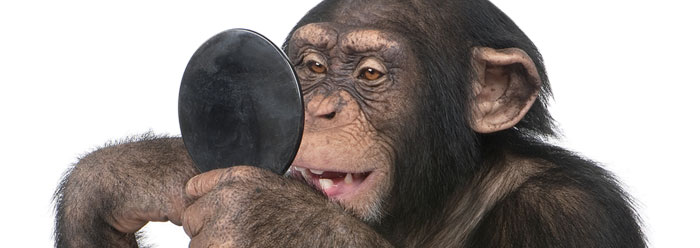A recent presentation at the 2011 Creation Biology Society (CBS) meetings has stirred the pot once again on the human-chimp DNA similarity issue among creationists, intelligent design proponents, and some evolutionists.1 It was reported that a query of 40,000 chimp genomic DNA sequences against the most recent assembly of the human genome provided an average similarity estimate of 97 to 98 percent.2 Evolutionists frequently cite such percentages as an indication of common ancestry, but the ICR life sciences team has been examining the question of human-chimp genetic similarity…and what we’ve discovered raises significant challenges to the standard claims.3
For example, a report in 2007 showed that 23 percent of the human genome shares no immediate genetic ancestry with chimpanzees, mankind’s supposed closest living relative.4 A more recent study showed extreme dissimilarity (> 30 percent) between human and chimp Y chromosome DNA sequence.5 Furthermore, when data are provided in research papers that allow the determination of DNA sequence gaps in alignments, actual overall identities are 70 to 87 percent.6, 7, 8, 9
To help clarify actual data associated with the ongoing controversy, the Institute for Creation Research has become actively involved in human-chimp DNA similarity research. Based on the CBS report, the ICR life sciences team obtained the same 40,000 chimp DNA sequences…individual random fragments (about 735 bases each) from the chimpanzee genome sequencing project. For an initial test of the chimp data, we generated 1,600 DNA alignments with the human genome using the software BLASTN with default parameters.
In contrast to the results presented at the CBS meeting, we only obtained a genome-wide sequence identity of 89 percent. The CBS report did not indicate which BLASTN parameters were used. Perhaps those parameters were more stringent and only produced alignments of extremely high similarity. While high levels of BLASTN stringency are useful for querying a few sequences of known identity to obtain fairly exact matches, they produce very biased data in whole genome queries.
To increase the capacity for sequence matching, we have also done experiments using BLASTN parameters that increase the overall length of alignments by twofold. After querying more than 5,500 chimp sequences, we are obtaining a best estimate of 85 percent between aligned regions of the human and chimp genomes. However, greater than 30 percent of the chimp DNA will not align with the human genome…even using extremely liberal matching parameters.
We are currently verifying that the 40,000 random chimp sequences are truly representative by querying them against the chimp genome assembly. Results indicate that the DNA is chimp sequence. We are also testing another type of chimpanzee DNA called genome survey sequence (GSS). The GSS sequences were derived from a project that involved mapping the chimp genome. In addition, we are testing a variety of different alignment parameters.
Our preliminary results show that the human and chimp genomes are more dissimilar than commonly reported. Our research also shows that highly selective and stringent alignment methods can exclude important data, providing inflated genome similarity estimates.
The ICR life sciences team hopes to have its first series of experiments completed and submitted to a journal within the next few months. As research progresses, we’ll report our results in future issues of Acts & Facts.
References
- Bryan College Prof Defends 98% Chimp-Human DNA Identity. Uncommon Descent Post. Posted on www.uncommondescent.com July 30, 2011.
- Wood, T. C. 2011. The Chimpanzee Genome is Nearly Identical to the Human Genome. Creation Biology Society Annual Conference Abstracts 2011. 1: 24-25.
- Jeanson, N. and J. Tomkins. 2011. Human-Chimp Genetic Similarity: Is the Evolutionary Dogma Valid? Acts & Facts. 40 (7): 6.
- Ebersberger, I. et al. 2007. Mapping Human Genetic Ancestry. Molecular Biology and Evolution. 24 (10): 2266-2276.
- Hughes, J. F. 2010. Chimpanzee and human Y chromosomes are remarkably divergent in structure and gene content. Nature. 463 (7280): 536-539.
- Britten, R. J. 2002. Divergence Between Samples of Chimpanzee and Human DNA Sequences is 5%, Counting Indels. Proceedings of the National Academy of Sciences. 99 (21): 13633-13635.
- Ebersberger, I. et al. 2002. Genomewide Comparison of DNA Sequences between Humans and Chimpanzees. American Journal of Human Genetics. 70 (6): 1490-1497.
- Watanabe, H. et al. 2004. DNA sequence and comparative analysis of chimpanzee chromosome 22. Nature. 429 (6990): 382-388.
- The Chimpanzee Sequencing and Analysis Consortium. 2005. Initial sequence of the chimpanzee genome and comparison with the human genome. Nature. 437 (7055): 69-87.
* Dr. Tomkins is a Research Associate and received his Ph.D. in Genetics from Clemson University.
Cite this article: Tomkins, J. 2011. Evaluating the Human-Chimp DNA Myth…New Research Data. Acts & Facts. 40 (10): 6.




















